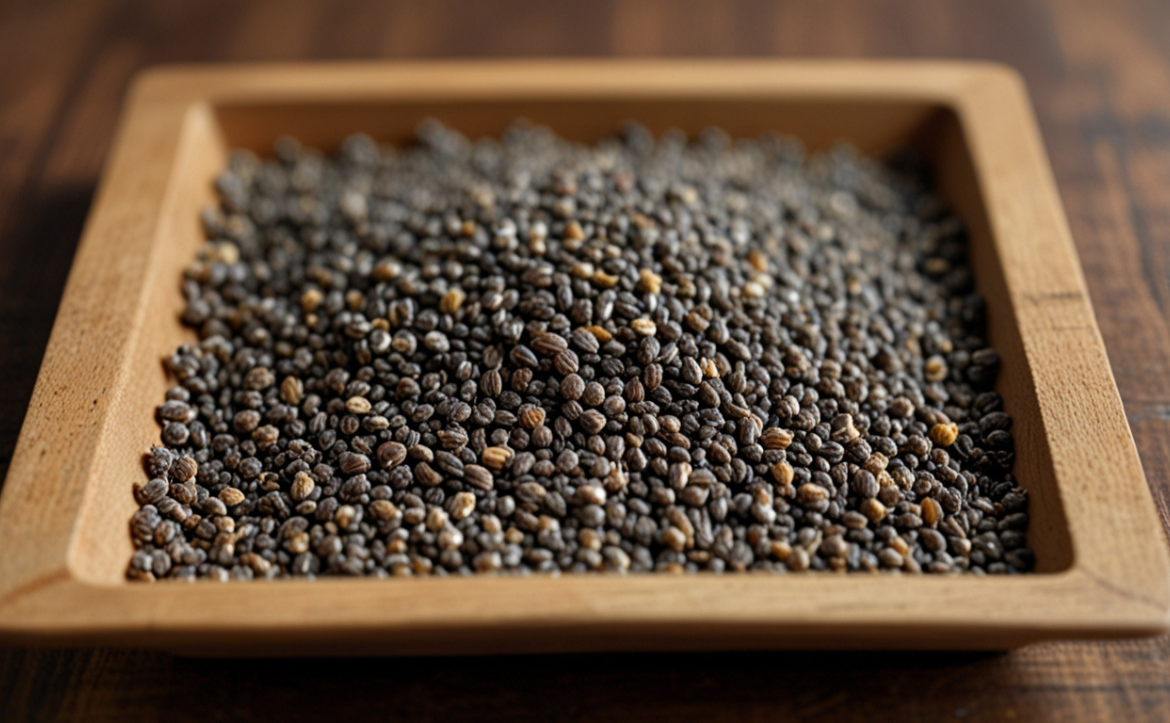
Chia seeds have great potential as a promising new food. Chia seeds are the edible seeds of Salvia hispanica, a flowering plant in the mint family (Lamiaceae) native to central and southern Mexico or of the related Salvia columbariae, Salvia polystachia, or Salvia tiliifolia. Chia seeds are oval and gray with black and white spots, having a diameter around 2 mm(0.08 in). The seeds are hygroscopic, absorbing up to 12 times their weight in liquid when soaked and developing a mucilaginous coating that gives chia-based foods and beverages a distinctive gel texture.
Table of contents
Introduction
Types
Care
Potting and Repotting a Chia Plant
Growing From Seed
Overwintering
Bloom
How to propagate a chia plant
Harvest Tips
Nutrition
Uses of chia seeds in the food industry
Common Chia Plant Problems
Conclusion
FAQ
Inrtoduction
Nowadays lack of food security is one of the major world problems. Underutilized crops rich in essential nutrients may considered as an alternative to cover the shortage of staple ones and help in covering the food demand .chia seed is an underutilized and neglected crop. It is rich in nutrients with medicinal value, able to help in treating malnutrition and improve the health status of populations. as a native origin. It grows in light to medium clay and sandy soils and even in arid lands with good drainage. It is semi-tolerant to acid soils and drought. The leaves of the plant contain essential
oils that act as insect repellents, thus chia can be grown without pesticides. The seeds of this plant were used for different purposes as human food for about 5500 years with corn in Mexico and preparation of folk medicines in Southern California in USA. It is now extensively used as a part of food in Mexico, Argentina, Chile, New Zealand, Japan, USA, Canada, and Australia. It is considered as a safe food with no potentially harmful effects and widely utilized in baked goods, nutritional supplements, cereal bars, cookies, bread, and snack products. According to European Food Safety Authority chia seeds do not cause any adverse allergenic, anti-nutritional, or toxic effects. It is an oil seed (up to 32% oil content) rich in Omega-3 (ω3) fatty acids with good quality protein and high content of dietary fibers, vitamins, minerals, and polyphenolic compounds.
In the 21st century, chia is grown and consumed commercially in its native Mexico and Guatemala, as well as Bolivia, Argentina, Ecuador, Nicaragua, Australia, the United Kingdom, and the United States New patented varieties of chia have been developed in Kentucky for cultivation in northern latitudes of the United States.
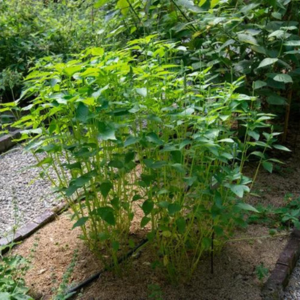
Chia Overview
Common Name: Chia
Botanical Name: Salvia hispanica
Plant Type: Annual
Mature Size: 3-5 ft. tall, 2-3 ft. wide
Sun Exposure: Full
Soil Type: Clay, sandy
Soil pH: Acidic, neutral, alkaline
Bloom Time: Summer
Flower Color: Blue
Hardiness Zones: 8-11 (USDA)
Native Areas: North America, Central America
Types of Chia Plant
Salvia hispanica (Mexican sage): an annual herb native to Mexico that can grow up to 6 feet tall
Salvia columbariae (desert chia): native to the Southwest; this is an annual, low-growing plant that produces a minty smell
Chia Plant Care
If you want to grow this chia crop from seed in your home, these plants are very easy to grow and require very little maintenance once established, especially if you live in a hot area of North America. Here are some basic requirements.
Needs full sun but not too much heat
Can easily adapt to different types of soil
Drought tolerant but will need water in extreme drought
Light
chia plants grow well in full sun and can tolerate heat even on the hottest summer days, but too much heat can sometimes kill the plants.
the soil
These plants live in a wide range of soils. Their native areas include sandy soil but they also grow in clay. However, good drainage is essential .Chia plants do not like to be too wet.
If you want to grow chia plants in containers, use a good compost and soil mix.Add some sand and use unglazed terra-cotta pots for better moisture absorption.
Water
Chia plants are drought tolerant so they don’t need regular watering until they grow but may need occasional little or extra watering as they can adapt to all conditions. These plants are among the first to re-emerge after fire, proving their hardiness and adaptability.
Temperature and humidity
Since chia plants grow best in warm climates and are not cold tolerant, keep this plant between 16° and 26°C (61°-79°F). If you plant in containers and want to grow them in a place where the temperature is below 16 degrees Celsius, move the containers indoors.
Fertilizer
Fertilizers are not required for rich soil but if your soil is not rich, get the soil tested by your nearest horticulture or nursery expert and apply fertilizers.
Potting and Repotting a Chia Plant
You can grow these chair plants indoors, but they need about eight hours of sunlight per day to grow . Also, need a terracotta pot or container with a good drainage system add some sand to the soil and if necessary mix some fertilizer into the soil. This plant does not require repotting so you can start it every year with fresh seeds and soil in a pot.
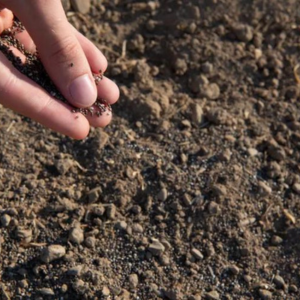
How to Grow Chia Plants From Seeds
Although this plant grows in USDA zones 8,9,10,11. new improved seed strains are being grown in colder regions. If you live in a USDA zone, you can grow chia seeds like any other annual flower.
Prepare the soil in your garden or the container in which you will sow the seeds in the fall and then lightly scatter the seeds into the soil, then cover the seeds with a little soil. Water the soil lightly until it sprouts. Once the seeds begin to germinate, water very little. This way you can grow chia trees from seed every fall.
They are pollinated by pollinators. However, self-pollination also occurs. Chia seeds are produced in small seed heads under the flowers.
Overwintering
Chia plant is not cold-tolerant. This plant will die in cold temperatures. Grow as summer annuals.
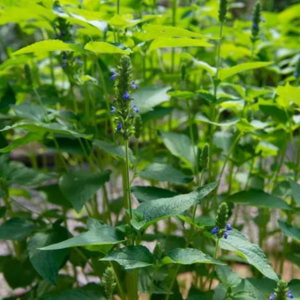
Bloom Months
This is an annual plant that blooms from late spring to early summer, varying based on rainfall.
How to propagate a chia plant
Chia plants are highly self-seeders, so they will produce a new crop of plants each year without help.
Harvest Tips
Deadhead the flowers at the end of the season after they have dried and the petals have fallen to collect seeds for future consumption or plant production. Then save the seeds and place the flowers in a paper bag. When they are completely dry, crush the seed heads in the bag to release the seeds.
Nutrition
Researchers have reported chia seeds to have high nutritional content in the form of protein (15-25%), dietary fibre (18-35%),6% water, fat (15-35%) and ash content (4-6%) . chia seeds are a rich source (20% or more of the Daily Value, DV) of the B vitamins thiamin and niacin (54% and 59% DV, respectively) and a moderate source of riboflavin (14% DV) and folate (12% DV). The seeds are rich in several dietary minerals, including calcium, iron, magnesium, manganese, phosphorus, and zinc (all more than 20% DV ).
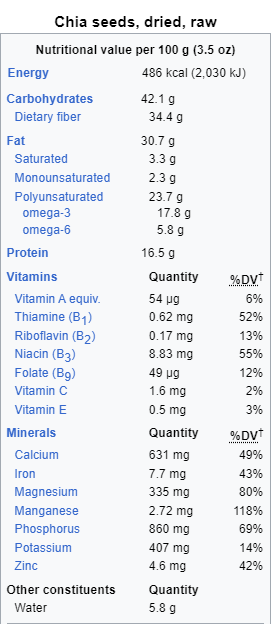
As food
Chia seeds may be added to other foods as a topping or put into smoothies, breakfast cereals, energy bars, granola bars, yogurt, tortillas, and bread . They also may be made into a gelatin-like substance or consumed raw . The gel from ground seeds may be used in place of eggs in cakes while providing other nutrients, and it is a common substitute in vegan and allergen-free baking
Again, Whole seeds and their flour, oil, and mucilage were used in preparing cold and hot drinks, corn cake, biscuits, salad dressing, jam-like products, and jelly.
Chia is considered a novel food in Europe because it does not have “a significant history of consumption within the European Union before 15 May 1997”, according to the Advisory Committee of Novel Foods and Processes. Under this rule, chia seeds may be 5% of the total matter in bread products. Prepackaged chia seeds shall carry additional labeling to inform the consumer that the daily intake is no more than 15 grams per day and pure chia oil only 2 grams per day. Chia seeds sold in the EU are imported mainly from South American and Central American countries and require inspections for levels of pesticides, contaminants, and microbiological criteria.
Uses of chia seeds in the food industry
Chia seeds because of the various nutritional properties, multiple studies have been conducted for different purposes, including their composition, characterization of the compounds, application in the food industry as well as usage in cosmetic industries . The high content of gum and mucilage in chia seeds makes the seeds potentially useful in the food industry . The seeds are mostly used in the baking industry. This is because of the higher amount of carbohydrates in the baked products compared to other nutrients which are essential. Among the products in which chia seeds have been included are bread, pasta, biscuits, and cakes. Chia seeds can also be used in beverages, snacks, and other products . Also, among the products which have been fortified with chia seeds is wheat bread . The presence of bioactive compounds in chia seeds has contributed significantly to the formulation of various functional foods . However, the addition of chia seeds to original products made the products have characteristics different from their original characteristics. analyzed the effects of chia on the production of wheat bread and reduction in bread firmness. Coelho and Salas-Mellado noted that breadcrumbs incorporated with whole chia seeds were softer than chia flour. added 4 to 6% of chia seeds to wheat flour during the baking of bread and noted a reduction in the amount of the bread obtained. In addition, 6 to 8% chia seeds to wheat flour reduced baking loss because the high content of dietary fibre in chia combines with water and prevents evaporation during bread baking. This indicates that when chia seeds are incorporated into flour products, they might influence the swelling capacity and water-holding capacity of the products. dark colour in the bread baked into which chia seeds had been incorporated because of phenolic compounds.
Common Chia Plant Problems
Although chia plants have virtually no pests or diseases, they are susceptible to a few common problems.
Root rot
If you overwater your plant, you may see root rot. Browning may occur simultaneously. To avoid this, plan for less watering as these plants are drought-tolerant and thrive better with less water than overwatering.
Singed plant
Chia is sensitive to extreme heat, though drought-tolerant. Be sure to water the plant extra during heatwaves to keep it healthy.
Conclusion
Chia seeds richness is due to its high composition of protein fats , fat , ash and presence of minerals, vitamins, phytochemicals and antioxidants. The nutritional composition of chia seeds varies because of their geographical origins and climatic and environmental conditions. Characterization of chia seeds grown in different locations is crucial before the development of any new food product, and for food fortification or enrichment purposes using other local food products and chia seeds. This review recommends usage of chia seeds on its natural form or in combination with other less dense food products. During the development of new functional foods with the incorporation of chia seeds, consideration of the physical and functional properties of the new food product to be developed is essential.
FAQ
Can you grow a chia plant from store-bought chia seeds?
Yes, you can grow a chia plant from store-bought chia seeds as chia seeds are always sold raw.
Are chia seeds good for skin?
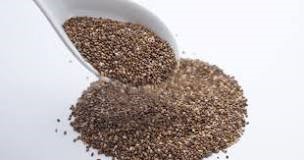
Chia seeds have the ability to retain moisture, which makes them a great go-to for when your skin needs that hydration. They keep the skin hydrated and lock-in moisture, which proves to be excellent for dry and sensitive skin too
Can chia seeds reduce belly fat?
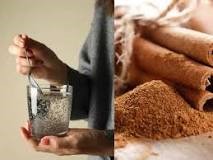
Combining chia seeds with cinnamon water creates a powerful drink that aids in weight loss, boosts metabolism, regulates blood sugar levels, and promotes overall well-being.
Do chia seeds help in hair growth?
Chia seeds are bursting with essential amino acids and they do some great work from inside the scalp. They inhibit hair fall and give a boost to new hair growth. They also help fight inflammation. Zinc and copper prevent thinning of hair, thus helping hair growth.
Do chia seeds help in weight loss?

Chia seeds contain a unique type of fiber called mucilage, which helps keep food in the stomach longer so that you feel full longer. This helps with weight loss by reducing hunger pangs.
What are chia seeds’ side effects?
Some people may experience an allergic reaction after eating chia seeds, though this is uncommon. Food allergy symptoms may include vomiting, diarrhea and itching of the lips or tongue.
Can we take chia seeds in periods?
Foods that may relieve period pain or cramps
Foods rich in omega-3 fatty acids include chia seeds, walnuts, flaxseeds, salmon, herring, sardines, mackerel, oysters and edamame beans.
Are chia seeds scientifically proven?
Research suggests that chia seeds may help prevent chronic conditions such as heart disease, diabetes, obesity and maybe even cancer. Results of human studies show that chia seeds may: Decrease inflammation. Improve control of blood sugar levels.
Who should not eat chia seeds?
Medicines: Avoid taking chia seeds if you are taking medications like anticoagulants and antiplatelets (prevent blood clots), anti-hypertensive (treats high blood pressure), anti-cancer, antioxidants, and omega-3 fatty acids, as chia seeds might interact with these medicines.
Articles:
www.researchgate.net/publication/349672865_Nutritional_health_benefits_and_usage_of_chia_seeds_Salvia_hispanica_A_reviewhttps://www.researchgate.net/publication/349672865_Nutritional_health_benefits_and_usage_of_chia_seeds_Salvia_hispanica_A_review
https://ejfs.journals.ekb.eg/
